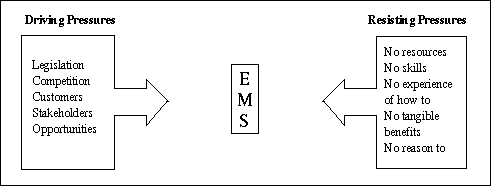
|
Level 5 |
|
Responsibilities for Implementing an EMS |
Implementing an EMS is implementing a programme of change. It will involve an in-depth examination of what the company does and how this affects the environment. New objectives and targets will need to be set and supported by all departments and personnel. If the company is not ready to accept this change, it will fail in its aim to implement a credible EMS.
For many people and organisations, change is an uncertainty or threat. Faced with changing environmental performance, individuals and groups within an organisation can question if it is necessary. Managers asked to join the ESG, may question the need to be a member as their department doesnt have an effect on the environment. They need to be made aware that all activities have an impact on the environment. Others inside the organisation also need to be given clear reasons as to why implementing an EMS is necessary (refer to Unit 1 for the benefits of environmental management).
The Management Representative will first need to ensure that the executive management, and senior managers who will form the ESG will accept the change. One way to do this is to analyse the pressures that help or hinder the change and the management of that change. Increasing the 'driving' pressures may seem like the best strategy but in practice this can increase resistance. A more effective method would be to reduce the 'resisting' pressures.
